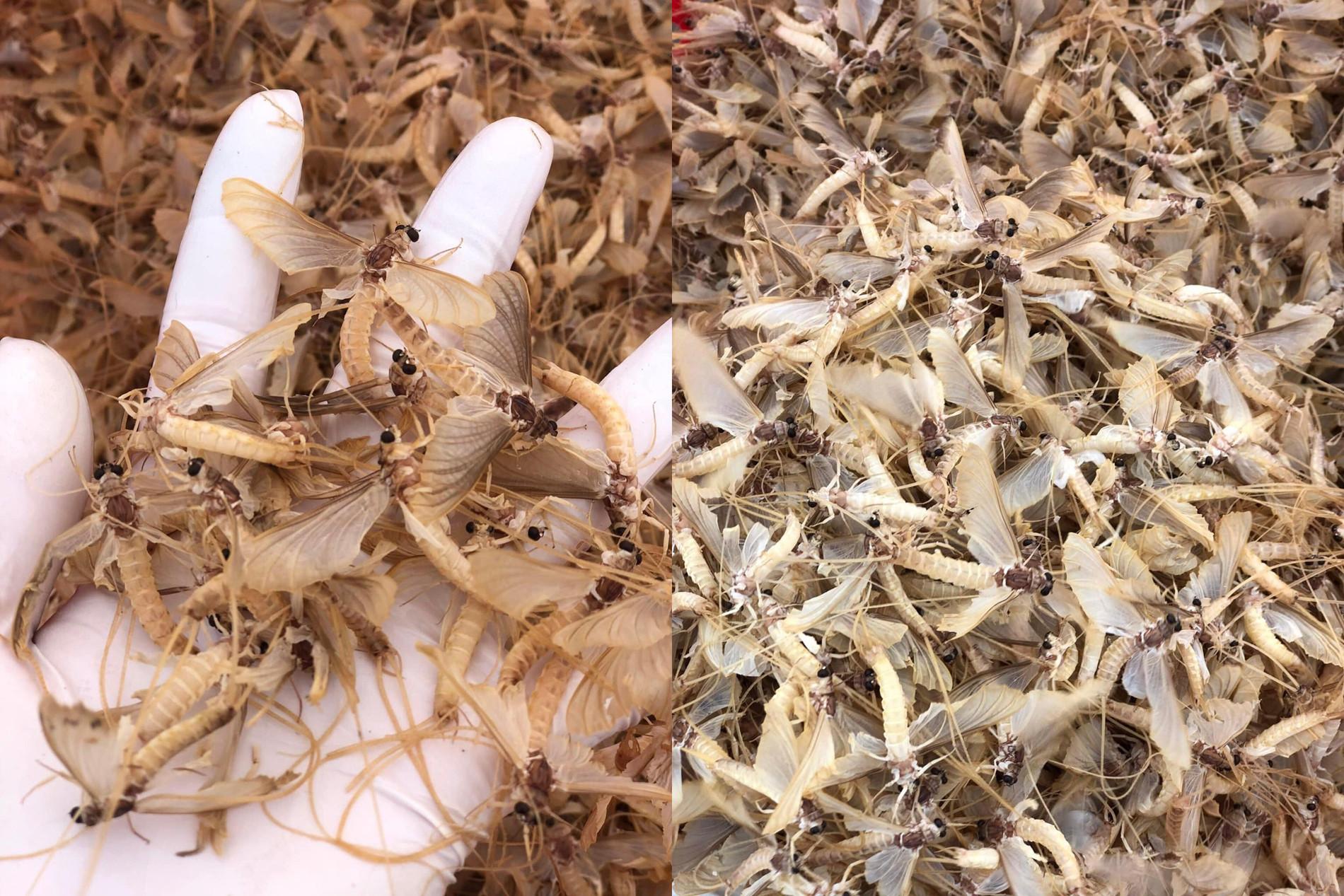
“Vo” lives in the rich soil at the Red River’s bottom. Its life cycle is brief. First, larvae burrow up from the mud to the surface, shedding into “vo” that flutters aimlessly for about 15 minutes before molting again.
This quirky growth process earned it the name "vo" from locals. Post-molt, it lays spawn and dies. The spawn hatch into larvae, sinking back to the riverbed to await their turn to emerge.
Do Thanh, a resident in Thanh Tri district, Hanoi, explained that “vo” dwells at the river’s bottom, surfacing for mere hours at dawn to molt.
“They show up a few times a year, peaking from the second to fourth lunar months. Experienced locals can predict when they emerge,” he said.
“If “vo” appears on the first day of the year, they’ll resurface a week later. They come out when the weather shifts - especially humid heat turns to rain.”
Thanh noted they appear for just a few hours, usually most abundant around 5am, and just for 10-15 minutes. They cluster mainly at river forks with rich soil for nesting.
Catching them isn’t easy. Fishermen rise early, gauging weather and tides to time the vo’s molt. They take boats with large nets or scoops to harvest them.
“In recent years, as 'vo' has become a pricey delicacy, folks use motorboats and funnel nets to nab more and faster. You’ve got to be quick - if you dawdle, they will vanish or disintegrate in the water,” Thanh added.
When “vo” season begins, when catches are plentiful, “vo” sells for VND280,000-350,000 per kg. Later, with scarcer hauls, prices soar past half a million VND per kg, but still not enough to sate Hanoi’s gourmet crowd.
Thanh Mai, who runs an eatery in Hoang Mai District, said “vo” is a hit ingredient.
Chefs spin them into inventive dishes—vo salad, vo patties, stir-fried vo with water spinach, vo crab broth hotpot, vo with catfish, vo stir-fried for shrimp puffs—but the favorite is sautéed with kaffir lime leaves.
“Prepping it is simple. Pick out leftover shells, rinse gently, drain, then cook as you like,” Mai said.
“The sauté with pork fat and chopped lime leaves is a crowd-pleaser—easy and tasty. You get a soft, rich, fatty bite with an indescribable aroma. Many say it’s tastier than seafood like shrimp or crab,” she added.
Thao Trinh
